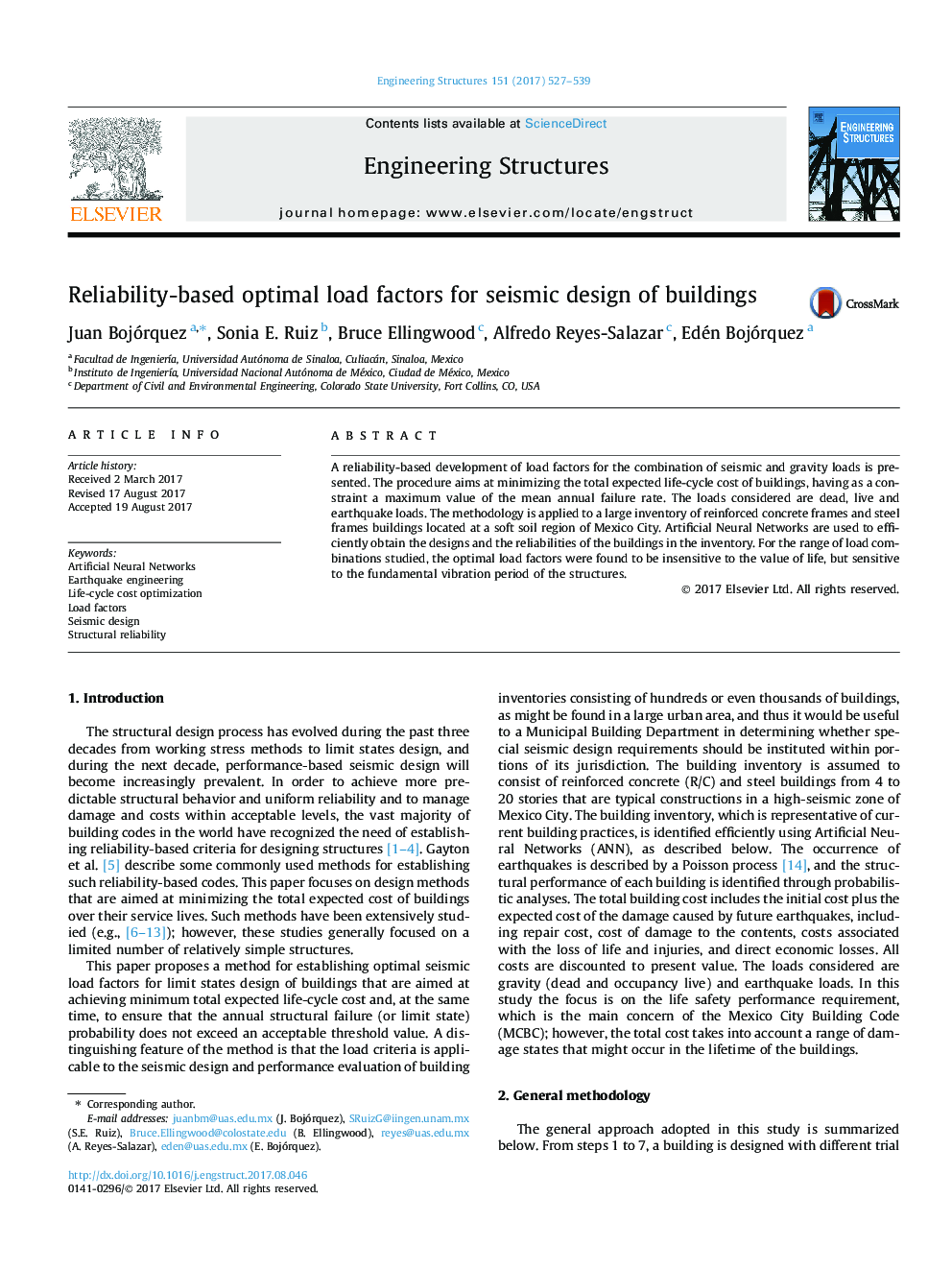| Article ID | Journal | Published Year | Pages | File Type |
|---|---|---|---|---|
| 4919786 | Engineering Structures | 2017 | 13 Pages |
Abstract
A reliability-based development of load factors for the combination of seismic and gravity loads is presented. The procedure aims at minimizing the total expected life-cycle cost of buildings, having as a constraint a maximum value of the mean annual failure rate. The loads considered are dead, live and earthquake loads. The methodology is applied to a large inventory of reinforced concrete frames and steel frames buildings located at a soft soil region of Mexico City. Artificial Neural Networks are used to efficiently obtain the designs and the reliabilities of the buildings in the inventory. For the range of load combinations studied, the optimal load factors were found to be insensitive to the value of life, but sensitive to the fundamental vibration period of the structures.
Keywords
Related Topics
Physical Sciences and Engineering
Earth and Planetary Sciences
Geotechnical Engineering and Engineering Geology
Authors
Juan Bojórquez, Sonia E. Ruiz, Bruce Ellingwood, Alfredo Reyes-Salazar, Edén Bojórquez,
